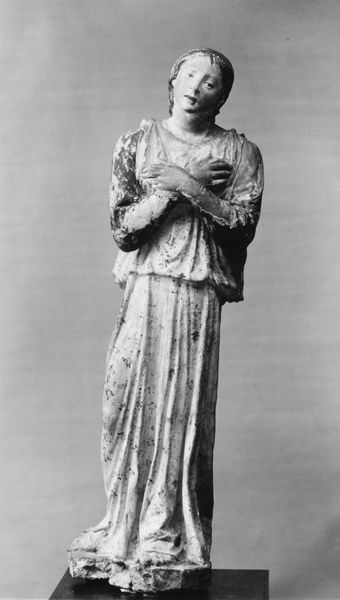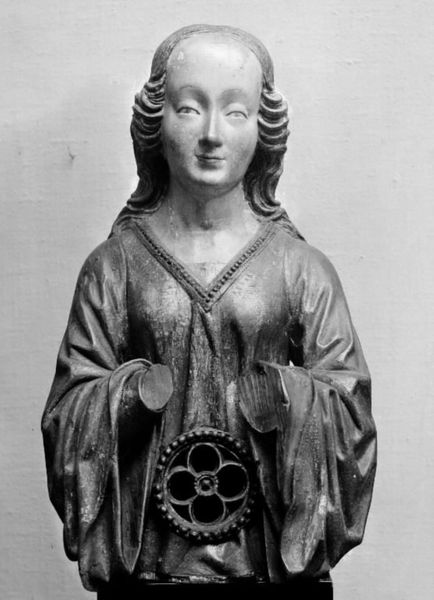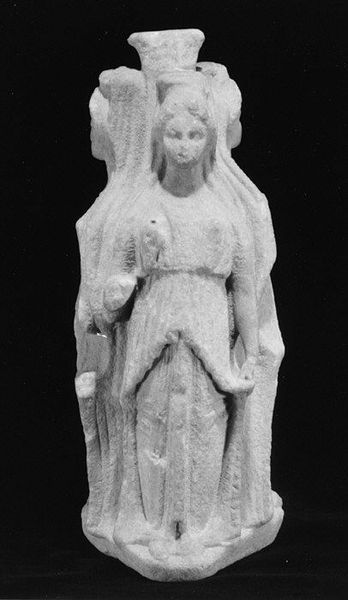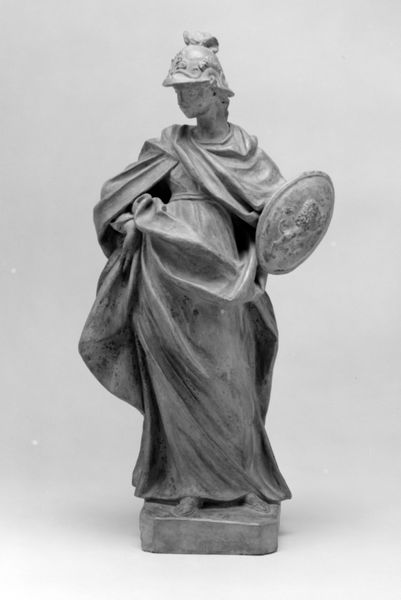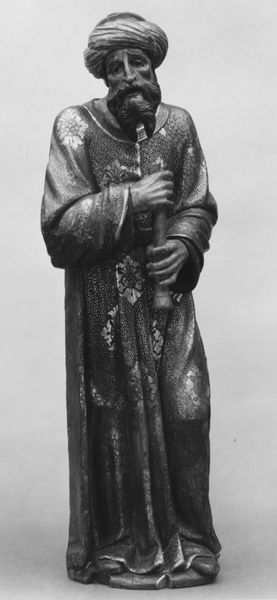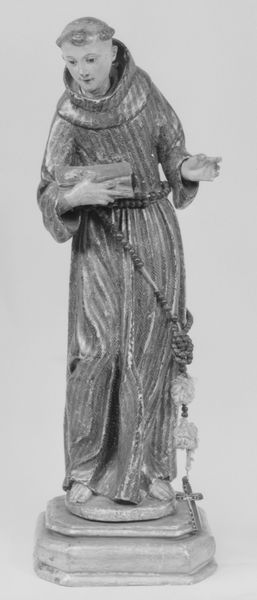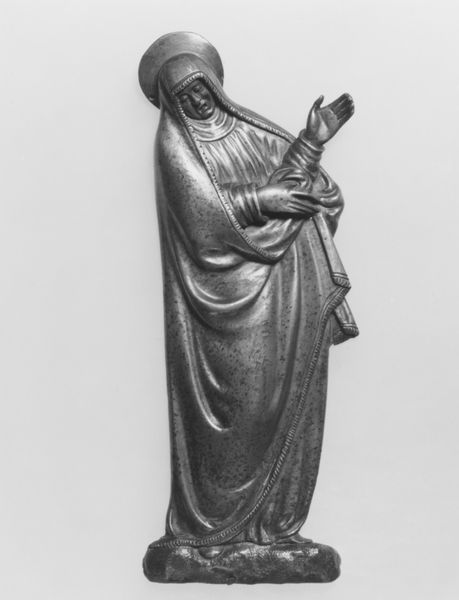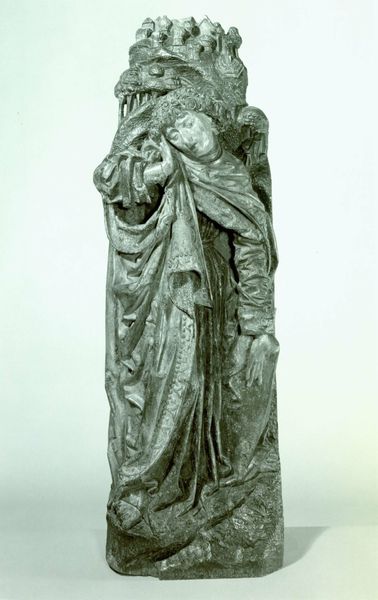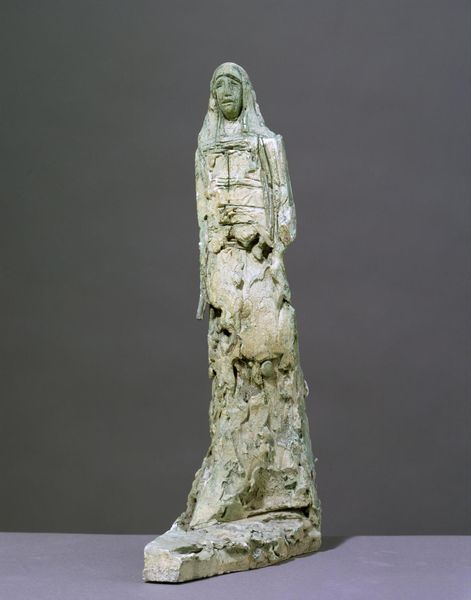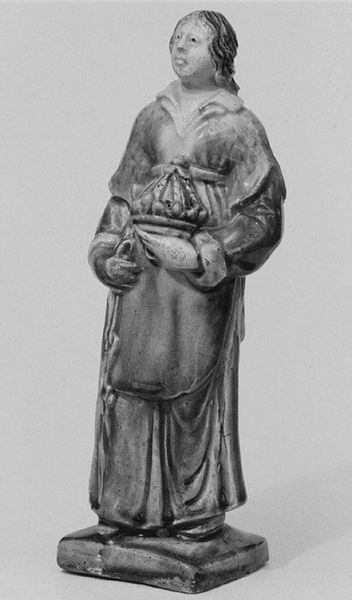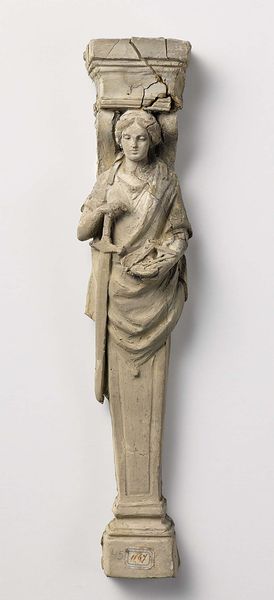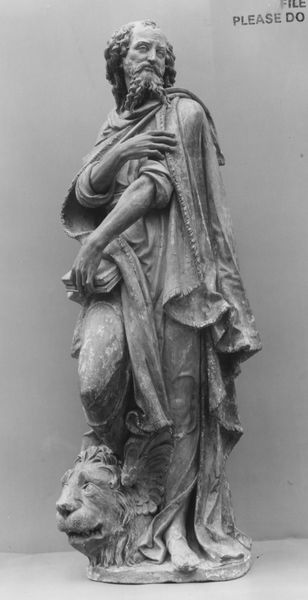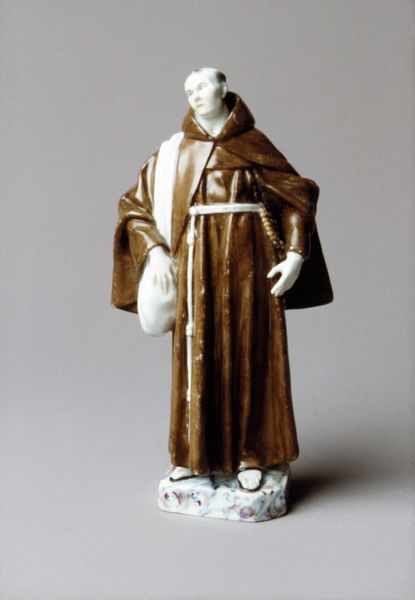
Dimensions: H 7.6 cm
Copyright: Public Domain
Curator: Looking at this sculpture of a Bishop from the Haly workshop, crafted sometime between 1740 and 1800, currently held here at the Metropolitan Museum of Art, I immediately note its serenity, its almost spectral quality given the glass medium. What are your first impressions? Editor: I see authority rendered fragile, an interesting commentary given the Church's political heft during the period of its creation. The baroque style evident in the swirling base and intricate detailing only serves to highlight this tension. Curator: Indeed, glass itself has powerful symbolic resonance. Consider how light refracts and transforms through it, a potent metaphor for spiritual enlightenment or even divine intervention. His open palm, seemingly offering a blessing, gains a subtle vulnerability given the delicate nature of the material. Editor: Precisely. The choice of glass undermines the expected power dynamic. Was this a deliberate challenge to clerical authority by the artist, or perhaps a more subtle critique embedded in a society grappling with religious reform? Curator: It could also speak to the bishop's personal vulnerability within the structure of the church. The crook or staff in his left hand, made of a dark metal, a contrast to the clear glass that can represent his connection to earthly structures of the Catholic hierarchy, his actual authority. The material itself tells the emotional and psychological burden. Editor: The Met situates this sculpture within a broader context of increased secularism and questioning of established powers in the late 18th century. So, would this have been for the individual, or part of some wealthy parish display, a signifier for social structures in glass, so breakable! Curator: A great question that speaks to a lot of context: I see it as both! I also ponder on this Baroque styling choice too—glass as Baroque brings such emotional power from delicacy combined with dynamic movement. Editor: I find myself still intrigued by the contrasting materials. Perhaps the fragility symbolizes a fleeting moment in the church’s long history of socio-political control, captured for eternity, here in the museum's holdings. Curator: Absolutely. The power of this little statue speaks volumes on symbols over long expanses of time and in its museum space today. Editor: It provides an unexpected point of entry for us to see these artifacts in a different context than expected.
Comments
No comments
Be the first to comment and join the conversation on the ultimate creative platform.
